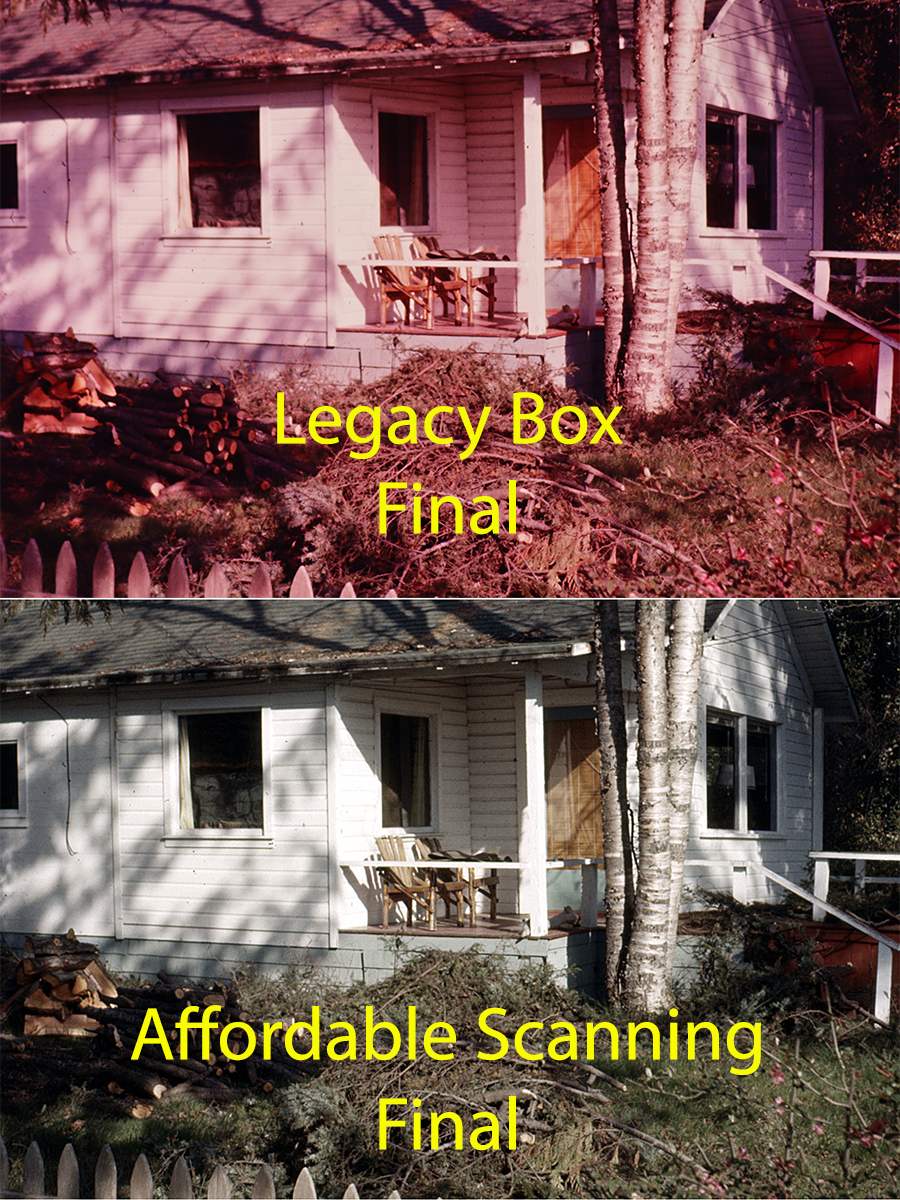Expert Slide and Photo Scanning Since 2002.
4,000 ppi Scanning and Premium Photoshop
Editing On Every Scan. 49¢ most slides.
We also can make PRINTS from your Slides.
www.Slides.Pics
Maryland 35mm Slide, Photo & Film Scanning

All Scanning companies will NOT give you the same results, Click Here.
While we do NOT have a local office in your state, Affordable Scanning Services LLC has provided services for customers all over Maryland, and Baltimore, Frederick, Gaithersburg, Rockville, Bowie, Hagerstown, Annapolis, Salisbury, College Park, Greenbelt, and the United States and Canada since 2002. In all that time we have worked with multiple people, university's and businesses with many different needs and end results. Our customers are very important to us and they are our best salespeople.
Some of the newer scanning companies, unable to compete with our services, have resorted to sending their customer's 35mm slides, photos and films to India or other third world countries. That is bad enough but what we think is really underhanded, is that they are not up front about this minor little detail. Most of their customers have no idea that their family photo collction is being loaded into a cargo plane and flown 7,000 miles over the ocean to India. And that may be the safest part of the trip.
At Affordable 35mm Slide Scanning, your job does not leave our premises,in Waupun Wisconsin, until we return ship to you. We treat your precious photo collection just like it was our own and I can tell you for certain, that we would never be sending our heirloom family photos to a thirdworld sweatshop in order to save a few dollars.
All jobs are worked by 100% USA citizens who are talented and skillful and they really are artists at heart. They work your family photos just like they were working their very own photos. We realize that this is the only time that you are going to be converting your slides and photos to digital and we are going to make it a good Experience for you.
Maryland History
"In 1629, George Calvert, 1st Lord Baltimore in the Irish House of Lords, fresh from his failure further north with Newfoundland's Avalon colony, applied to Charles I for a new royal charter for what was to become the Province of Maryland. Calvert's interest in creating a colony derived from his Catholicism and his desire for the creation of a haven for Catholics in the new world. In addition, he was familiar with the fortunes that had been made in tobacco in Virginia, and hoped to recoup some of the financial losses he had sustained in his earlier colonial venture in Newfoundland. George Calvert died in April 1632, but a charter for "Maryland Colony" (in Latin, "Terra Maria") was granted to his son, Cæcilius Calvert, 2nd Lord Baltimore, on June 20, 1632. The new colony was named in honor of Henrietta Maria, Queen Consort of Charles I. The specific name given in the charter was phrased "Terra Mariae, anglice, Maryland". The English name was preferred over the Latin due in part to the undesired association of "Mariae" with the Spanish Jesuit Juan de Mariana. Leonard, Cecilius' younger brother was put in charge of the expedition because Cecilius did not want to go.
To try to gain settlers, Maryland used what is known as the headright system, which originated in Jamestown.
On March 25, 1634, Lord Baltimore sent the first settlers into this area. Although most of the settlers were Protestants, Maryland soon became one of the few regions in the British Empire where Catholics held the highest positions of political authority. Maryland was also one of the key destinations of tens of thousands of British convicts. The Maryland Toleration Act of 1649 was one of the first laws that explicitly dictated religious tolerance, though toleration was limited to Trinitarian Christians.
The royal charter granted Maryland the Potomac River and territory northward to the fortieth parallel. This proved a problem, because the northern boundary would put Philadelphia, the major city in Pennsylvania, partially within Maryland, resulting in conflict between the Calvert family, which controlled Maryland, and the Penn family, which controlled Pennsylvania. This led to the Cresap's War (also known as the Conojocular War), a border conflict between Pennsylvania and Maryland, fought in the 1730s. Hostilities erupted in 1730 with a series of violent incidents prompted by disputes over property rights and law enforcement, and escalated through the first half of the decade, culminating in the deployment of military forces by Maryland in 1736 and by Pennsylvania in 1737. The armed phase of the conflict ended in May 1738 with the intervention of King George II, who compelled the negotiation of a cease-fire. A final settlement was not achieved until 1767, when the Mason-Dixon Line was recognized as the permanent boundary between the two colonies.
After Virginia made the practice of Anglicanism mandatory, a large number of Puritans migrated from Virginia to Maryland, and were given land for a settlement called Providence (now Annapolis). In 1650, the Puritans revolted against the proprietary government and set up a new government that outlawed both Catholicism and Anglicanism. In March 1654, the 2nd Lord Baltimore sent an army under the command of Governor William Stone to put down the revolt. His Roman Catholic army was decisively defeated by a Puritan army near Annapolis in what was to be known as the "Battle of the Severn".
The Puritan revolt lasted until 1658. In that year the Calvert family regained control of the colony and re-enacted the Toleration Act. However, after England's "Glorious Revolution" of 1688, when William of Orange and his wife Mary came to the throne and firmly established the Protestant faith in England, Catholicism was again outlawed in Maryland, until after the American Revolutionary War. Many wealthy plantation owners built chapels on their land so they could practice their Catholicism in relative secrecy. During the persecution of Maryland Catholics by the Puritan revolutionary government, all of the original Catholic churches of southern Maryland were burned down.
St. Mary's City was the largest site of the original Maryland colony, and was the seat of the colonial government until 1708. St Mary's is now an archaeological site, with a small tourist center. In 1708, the seat of government was moved to Providence, which had been renamed Annapolis. The city was renamed in honor of Queen Anne in 1694.
An artist's rendering of the bombardment of Fort McHenry in Baltimore, which inspired the composition of the Star Spangled Banner.Maryland was one of the thirteen colonies that revolted against British rule in the American Revolution. On February 2, 1781, Maryland became the 13th state to approve the ratification of the Articles of Confederation which brought into being the United States as a united, sovereign and national state. It also became the seventh state admitted to the US after ratifying the new Constitution. The following year, in December of 1790, Maryland ceded land selected by President George Washington to the federal government for the creation of Washington, D.C.. The land was provided from Montgomery and Prince George's Counties, as well as from Fairfax County and Alexandria in Virginia (though the lands from Virginia were later returned through retrocession). The land provided to Washington, D.C. is actually "sitting" inside the state of Maryland (land that is now defunct in theory).
During the War of 1812, the British military attempted to capture the port of Baltimore, which was protected by Fort McHenry. It was during this bombardment that the Star Spangled Banner was written by Francis Scott Key.
Despite widespread support for the Confederate States of America among many wealthy landowners, who had a vested interest in slavery, Maryland did not secede from the Union during the American Civil War. This may be due in part to the temporary suspension of the Legislature by Governor Thomas Holliday Hicks and arrest of many of its fire eaters by President Abraham Lincoln prior to its reconvening. Many historians contend that the votes for secession would not have been there regardless of these actions. Of the 115,000 men who joined the militaries during the Civil War, 85,000, or 77%, joined the Union army. To help ensure Maryland's inclusion in the Union, President Lincoln suspended several civil liberties, including the writ of habeas corpus, an act deemed illegal by Maryland native Chief Justice Roger Taney. He ordered US troops to place artillery on Federal Hill to directly threaten the city of Baltimore. Lincoln also helped ensure the election of a new pro-union governor and legislature. President Lincoln even went so far as to jail certain pro-South members of the state legislature at Fort McHenry including the Mayor of Baltimore, George William Brown. Ironically, the grandson of Francis Scott Key was included in those jailed. The Constitutionality of these actions is still a source of controversy and debate. Because Maryland remained in the Union, it was exempted from the anti-slavery provisions of the Emancipation Proclamation (The Emancipation Proclamation only applied to states in rebellion). A constitutional convention was held during 1864 that culminated in the passage of a new state constitution on November 1 of that year. Article 24 of that document outlawed the practice of slavery. The right to vote was extended to non-white males in 1867."
From:
https://en.wikipedia.org/wiki/Maryland
|
About Our Company Copyright 2024 |
|
Email: Click Here After hours you will get a quicker response by using email. We answer email at ALL hours. Telephone messages are replied to during business hours. Affordable Scanning Services LLC 400 Bittersweet Lane Waupun, WI 53963
|
 Home
Home Order Forms
Order Forms



